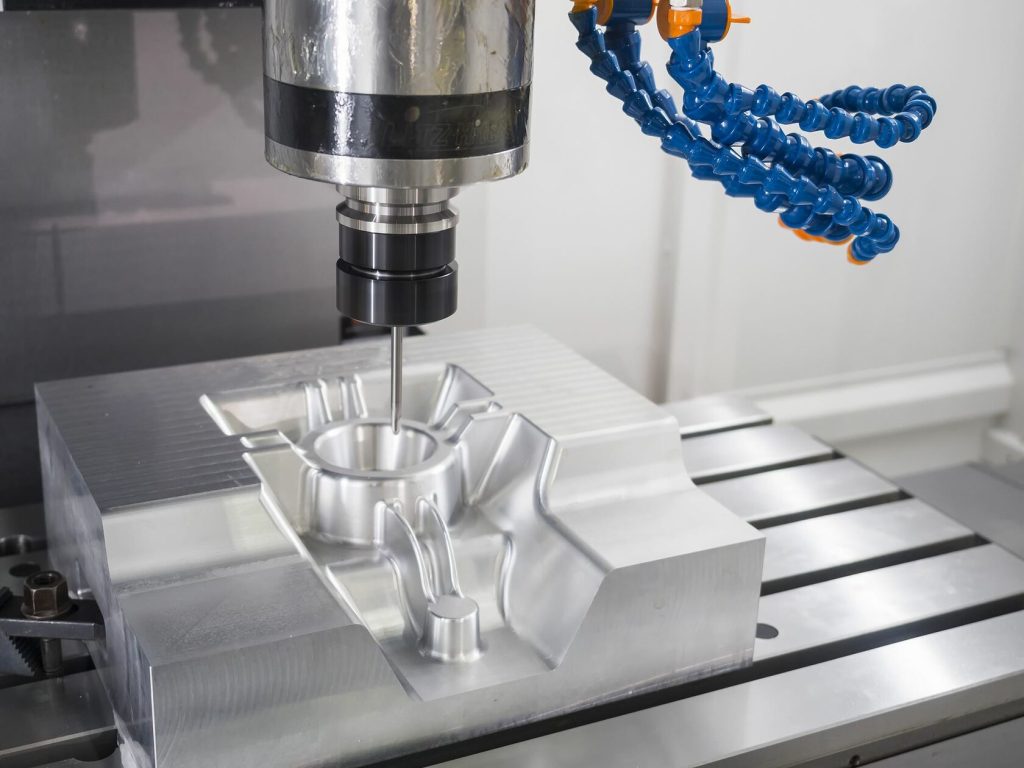
Choosing a CNC machine suitable for custom machining requires comprehensive consideration of multiple factors such as processing requirements, precision demands, production efficiency, and cost budget. Below are specific selection criteria and recommendations:
I. Clarify Processing Needs and Objectives
1. Workpiece Material and Shape Complexity
- Material Type: Different materials (e.g., aluminum alloy, stainless steel, titanium alloy, plastic, etc.) have varying requirements for machine rigidity, tool wear resistance, and cutting parameters.
▶ Example: For machining high-hardness steel, select machines with high spindle power and strong rigidity (e.g., horizontal machining centers); for lightweight metals like aluminum alloy, high-speed vertical machining centers are preferable. - Part Shape Complexity:
- Simple parts (e.g., shafts, discs): CNC lathes or vertical machining centers are suitable.
- Complex curved parts (e.g., molds, impellers): Multi-axis linkage (3-axis/5-axis machining centers) are required to ensure the tool can approach the workpiece at multiple angles.
2. Processing Precision Requirements
- Dimensional Accuracy: Precision parts (e.g., aerospace components) require machine accuracy of ±0.005mm or higher, while ordinary parts (e.g., general mechanical accessories) can meet requirements with ±0.02mm accuracy.
- Surface Roughness: High finish requirements (e.g., optical components) necessitate machines with high rigidity, stable feed systems, and high-precision spindles (rotational speed up to 10,000rpm or higher).
II. Key Machine Performance Indicators
1. Spindle Performance
- Speed Range: High-speed machining (e.g., aluminum alloy cutting) requires spindle speeds ≥8000rpm; low-speed heavy-duty machining (e.g., steel cutting) requires high spindle torque (e.g., over 200N·m).
- Spindle Power: Higher power enhances cutting capability but increases energy consumption. Spindle power for vertical machining centers typically ranges from 5-15kW, while horizontal machining centers can reach 20kW or more.
2. Feed Speed and Acceleration
- Rapid Traverse Speed: Affects non-cutting time efficiency, with common ranges of 15-60m/min; high-speed machines can exceed 80m/min.
- Feed Acceleration: High acceleration (e.g., 1-2g) is suitable for contour machining with frequent starts/stops, such as mold milling.
3. Number of Axes and Linkage Capability
- 3-Axis Machines: Suitable for planar machining and simple 3D contours, with lower costs.
- 5-Axis Machines: Capable of multi-face machining in one clamping, reducing fixture costs and positioning errors. Ideal for complex curved surface customization (e.g., aerospace blades, medical implants), but with higher prices (typically 2-5 times that of 3-axis machines).
4. Machine Rigidity and Stability
- Structural Design: Bed materials (e.g., cast iron, resin concrete) affect vibration resistance. Resin concrete beds offer excellent damping for precision machining; cast iron beds provide strong rigidity for heavy cutting.
- Guideway Types: Linear guideways enable fast movement, suitable for high-speed machining; hardened guideways have high load capacity, ideal for heavy-duty cutting (e.g., large mold machining).
III. Production Efficiency and Cost Considerations
1. Automation Level
- Tool Magazine Capacity and Tool Change Speed: Larger tool magazines (e.g., 24+ tools) reduce tool change time for multi-process machining; fast tool change (e.g., robotic tool change in ≤3 seconds) improves production efficiency.
- Workpiece Clamping System: Standard fixtures (e.g., vices, chucks) or optional automatic pallet changer systems (APC) are suitable for batch custom machining, reducing manual clamping time.
2. Cost Budget
- Initial Investment:
▶ Economical 3-axis vertical machining centers: ~¥200,000-500,000
▶ Mid-range 5-axis machining centers: ~¥1,000,000-3,000,000
▶ High-end precision machines (e.g., Swiss GF, German DMG): ¥5,000,000+ - Long-Term Costs: Include tool wear, maintenance (e.g., spindle bearing replacement costs), and energy consumption (higher power machines incur higher electricity costs).
3. Expandability and Compatibility
- CNC System: mainstream systems like Fanuc, Siemens, and Mitsubishi must support customized programming (e.g., macro programs, G-code customization) and interface with CAD/CAM software (e.g., UG, Mastercam).
- Accessories and Upgrade Space: Check if the machine supports adding a 4th axis, tool presetters, online inspection systems, etc., to expand processing capabilities in the future.
IV. Industry Application References
| Industry | Typical Parts | Recommended Machine Type | Key Indicators |
|---|---|---|---|
| Precision Mold Manufacturing | Injection molds, die-casting molds | 5-axis machining centers | Spindle speed ≥12,000rpm, positioning accuracy ≤±0.003mm |
| Medical Device Customization | Artificial joints, dental implants | High-speed vertical + 5-axis machines | Surface roughness Ra≤0.8μm, thermostatic machining environment |
| Aerospace Parts | Aluminum alloy structures, titanium alloy impellers | 5-axis horizontal machining centers | Spindle torque ≥300N·m, large travel (X-axis ≥2000mm) |
| Small-Batch Prototyping | Prototypes, non-standard parts | 3-axis/4-axis machining centers | Fast tool change (≤2s), support for rapid programming |
V. Supplier and After-Sales Service
- Brand and Reputation: Prioritize well-known brands (e.g., Mazak, Haas, Shenyang Machine Tool, Dalian Guangyang) for better quality and after-sales support.
- Test Cutting Verification: Request sample processing tests from suppliers to verify accuracy, surface quality, and processing efficiency.
- After-Sales Service: Pay attention to warranty periods (typically 1-3 years), response time (e.g., on-site maintenance within 24 hours), and training services (e.g., programming and operation training).
Summary: Decision-Making Process
- Define Requirements: List core factors such as material, precision, batch size, and budget.
- Preliminary Machine Selection: Choose the number of axes based on complexity and spindle power/rigidity based on material.
- Performance Comparison: Compare parameters, prices, and accessory configurations of different brands.
- On-Site Inspection: Visit supplier factories to observe actual machining performance and understand after-sales capabilities.
- Long-Term Planning: Reserve upgrade space to ensure the machine can adapt to future business expansion (e.g., transitioning from small batches to mass customization).